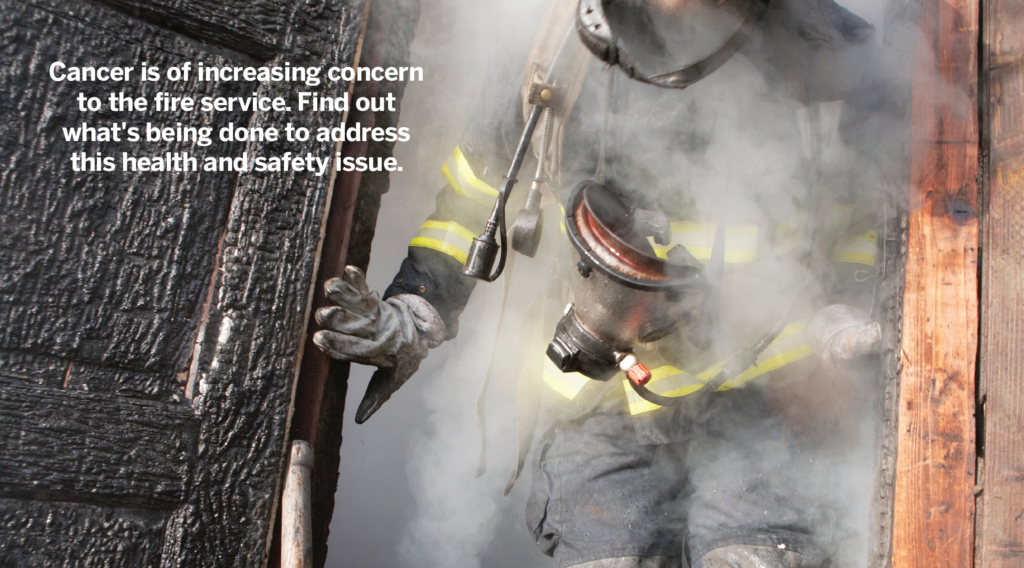
Cancer is the leading cause of occupational firefighter death in the United States. There is increasing research being done and more being learned about the risks of a firefighters developing certain types of Cancer. The numbers of firefighters developing Cancer over the public are staggering. Some studies suggest as much as 82 percent of individuals who have served as a firefighter will succumb from Cancer.
In January 2018, Holiday Park VFD Chief Jim Sims formed a four-man committee and together they had been researching, attending classes, and developing the C.A.A.R. (Cancer Awareness And Reduction) initiative. This initiative will require a new way of thinking and a change of many years of culture and attitudes not only in our department but also the fire service in general. The days of being covered in sot & dirt, and having your turnout gear dirty as badge of honor are over. Those contaminates are killing firefighters across the country; and in some cases putting their loved ones at risk too.
Holiday Park Volunteer Fire Department successfully launched the initiative on May 1, 2018.
COMMITTEE MEMBERS:
Jim Sims, Fire Chief
Greg Fusco, Assistant Fire Chief, Past Safety Officer
Mike Franitti, Past Senior Engineer
Alex Marcelewski, Medical Officer
FIRE STATION UPGRADE:
In addition the CAAR program; The Holiday Park Volunteer Fire Department recently completed an important health and safety upgrade to our facilities. In keeping with our department’s mission to prevent Cancer and related illnesses that occur in the Fire Service, we have installed a custom ventilation system designed to remove harmful gases & particles from the building caused by our fleet of vehicles. The “Plymovent System” was obtained via a competitive grant from the Federal Emergency Management Agency’s Assistance to Firefighters Program in 2019 but due to COVID-19’s impact installation took many months to get scheduled and finally completed at the end of 2020. Each of our six apparatus bay positions along with each vehicle has a dedicated ventilation system line, custom vehicle connection, and rolling frame to support collection of gases and particles. Click Here to Learn Moe
BOSTON FIRE DEPARTMENT’S CANCER IMPACT:
The video below is from the Boston Fire Department and their story of how cancer has impacted them. Commissioner Joseph Finn and his members share their personal stories and memories of those who have been lost to occupational cancer:
National Response by the United States Federal Government:
A new law that requires the Centers for Disease Control and Prevention (CDC) to develop and maintain a registry to collect data on firefighter cancer was signed on July 9, 2018 by President Trump. The Firefighter Cancer Registry Act calls for the collection of voluntary data including whether a firefighter is a career professional or volunteer, years on the job, the number of calls responded to, and incident type so that researchers can better understand the impact of smoke inhalation and other job-related dangers that may lead to cancer. (NFPA)
Holiday Park VFD’s program consists of various aspects:
1) Every member of the department will attend the C.A.A.R. training class. As new members join, it will part of their on-boarding process. (MANDATORY)
2) Each active firefighter will be issued a new set of turn-out gear to be used as his/her primary gear. Their existing gear will be collected, professional cleaned & repair, and then issued back to the firefighter as his/her back-up gear. Black gear for primary and tan gear for secondary.
3) At an emergency incident where the potential of contamination may have occurred, the officer in command will initiate a Decontamination & Rehab Procedure. The apparatus driver will set-up a small hose-line with special nozzle in an area away from the apparatus along with a brush next to a green cone to mark off the area. The firefighter will then hose/brush off any contaminates on his/her turn-out gear in a step by step method so that they can eventually remove their gear and not cause any further contamination. He or She will also use firefighter wipes to clean their face, hair, head, skin, and hands. The firefighter will change into a set of rehab clothing; while bagging up their gear for clean-up and storage. NO ONE GETS BACK ON THE APPARATUS DIRTY.
4) Upon return to the station, the firefighter will place the bag with his/her contaminated turnout gear in a designated location to be cleaned. The firefighter will then grab his/her back-up set of turnout gear and place that into service.
5) While on the incident scene, no Firefighter will go to Rehab or drink/consume anything until they have deconned themselves and used the firefighter wipes, especially on their face & hands.
6) Firefighters are encouraged to within a short time period go home and shower off from the incident or use the showers upstairs in the locker rooms.
7) Any firefighter who may become contaminated at emergency incident will report that to their apparatus officer, Fire Chief, and Infection Control Officer. The firefighter will then fill out a contamination form in order to keep records for potential follow-ups.
8) On every apparatus is a C.A.A.P. Bucket containing the following: Garden Hose Line, Garden Nozzle, Hand-Brushes, Firefighter Wipes, Industrial-strength trash bags, Soap, Green Cone, and & Heavy Duty Tape. There is also be a container with spare clothing (shorts, shirt, sweat-shirt, sweat-pants, and sandals) to change into when needed.
9) Within the station, no turnout gear will ever be permitted to be in the day rooms, offices, 2nd floor, or anywhere else except the apparatus bays. This is a preventative measure.
10) Officers and Firefighters will periodically inspect gear to check on cleanliness and to see if any damages have been incurred.
STAYING CLEAN IS VITAL
The video below is a quick illustration of how contaminates from a firefighter response can carry home and to other places:
NEW GEAR FOR HOLIDAY PARK VFD
Below are a few photos of some of our firefighters being issued their new gear as part of C.A.A.R. initiative; it took a few nights to get everyone suited up & fitted properly. As a department we returned to the “black” color gear because the newer material allows for us to tell when the gear has been damaged in a fire, it actually changes color. There are also several new protective features built into the fabric and design of the coat/pants.
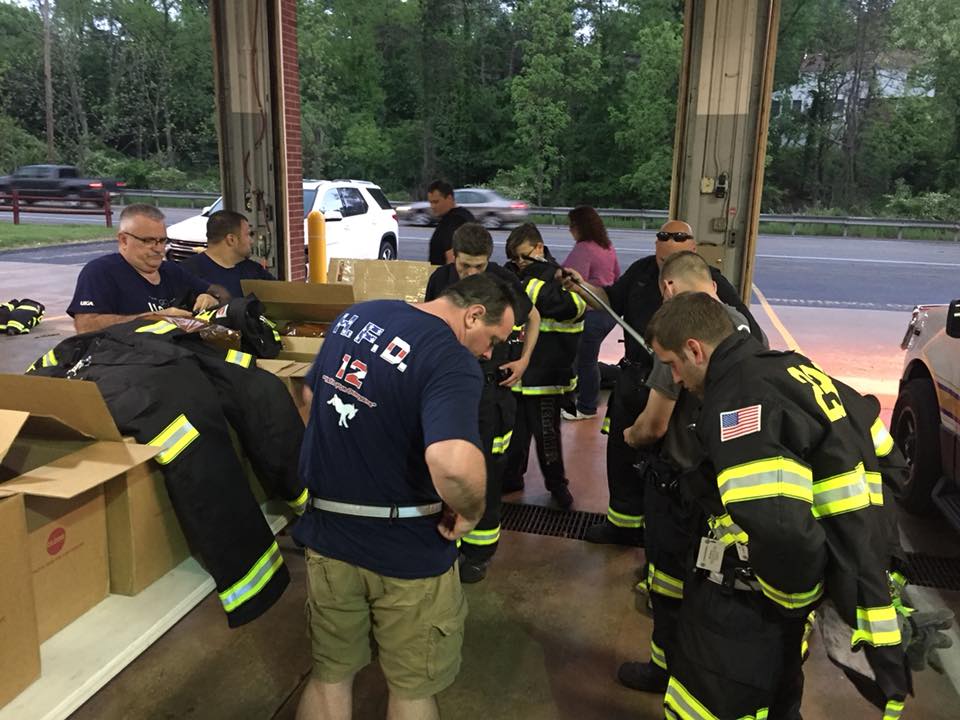

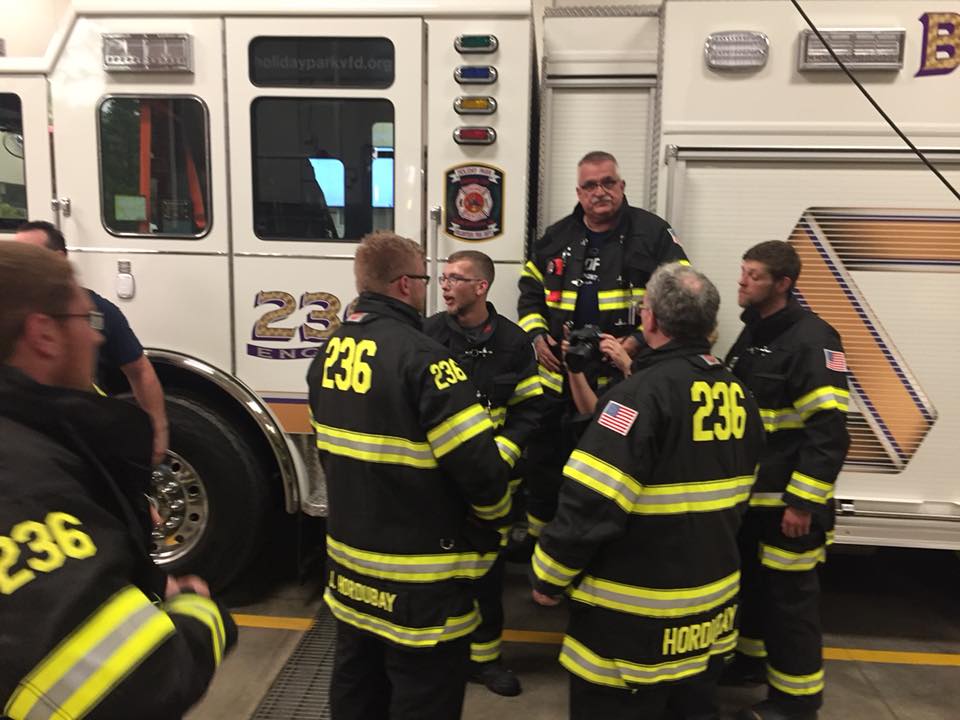

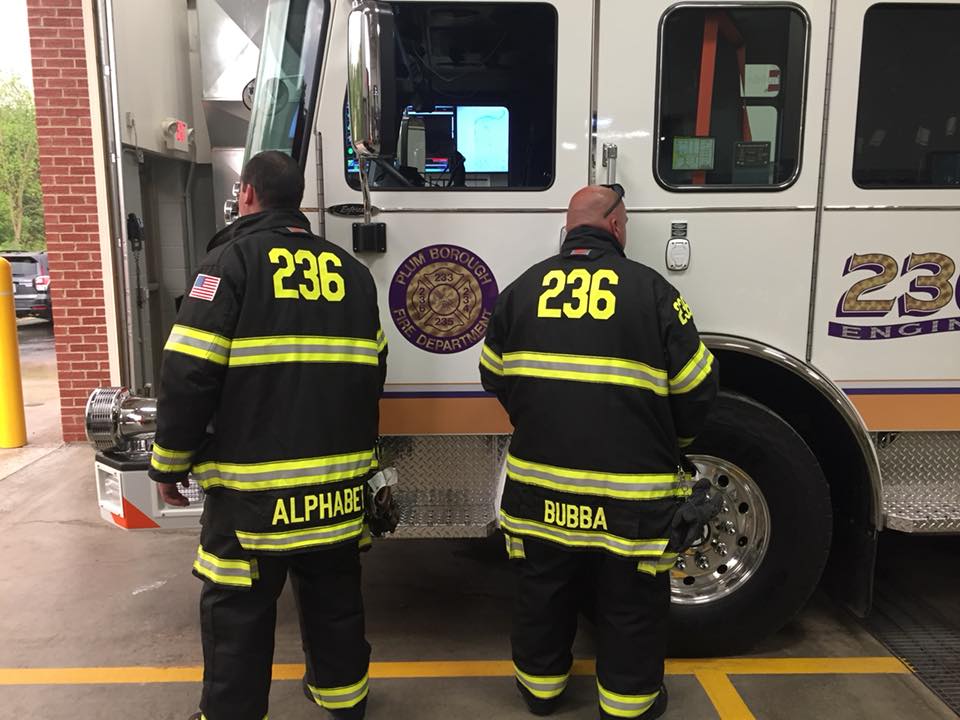
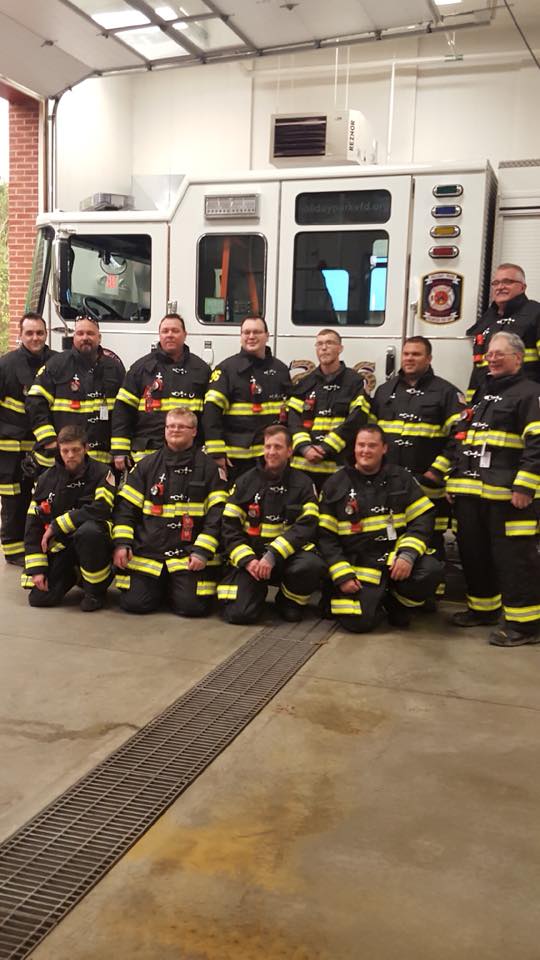
Our old tan colored gear as shown in the photo below will now become our spare/back-up gear:
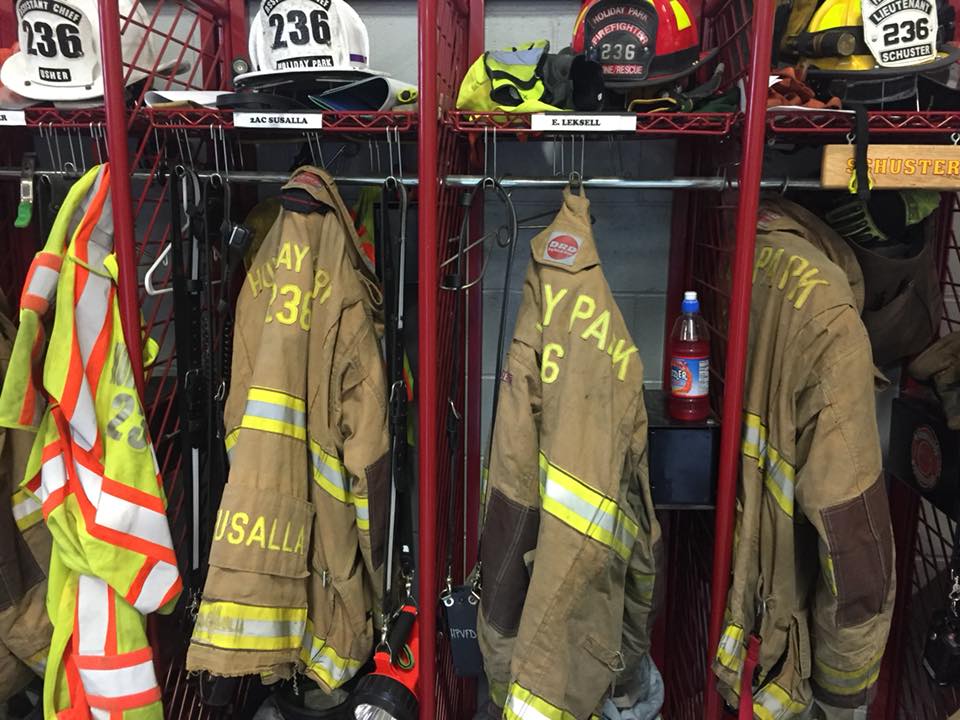
RESOURCES
Firefighter Cancer Support Network (Pennsylvania Chapter)
National Fire Prevention Association: Firefighters & Cancer
Centers for Disease Control & Prevention: Firefighter Resources
National Institute for Occupational Safety and Health (NIOSH)
US Fire Administration: Clean gear is the new badge of honor

